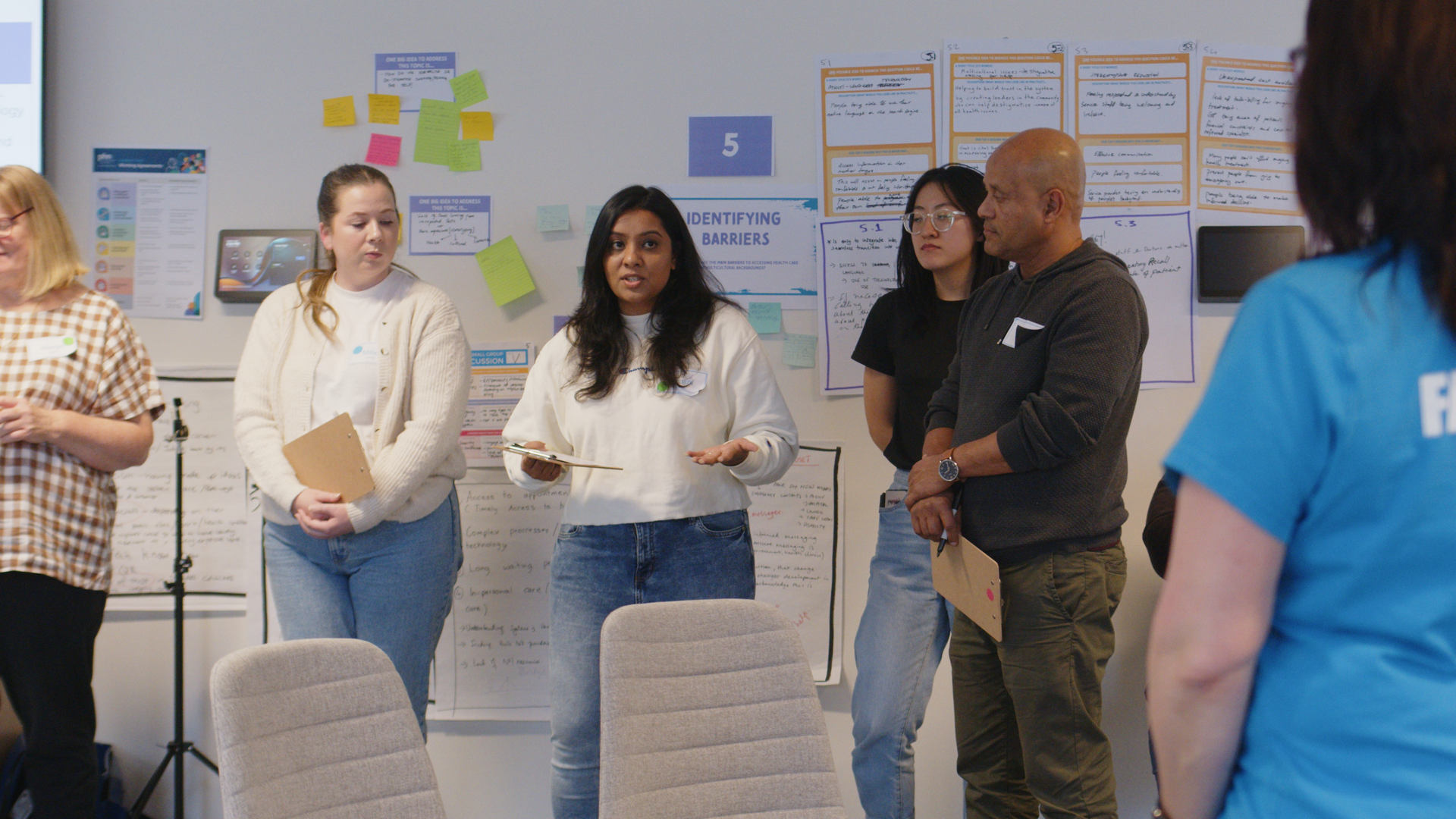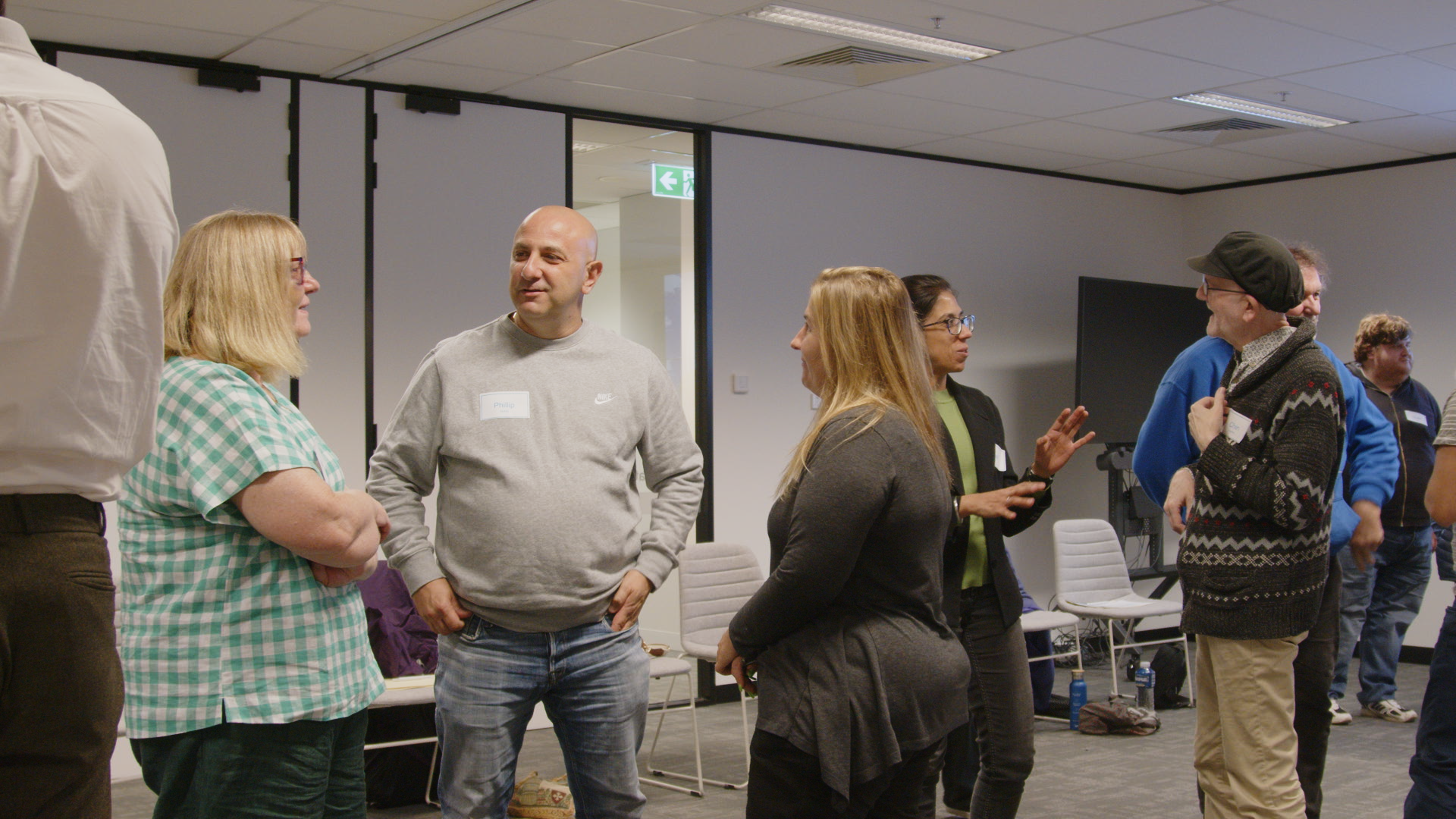
Putting it all together: the people behind the data
Pictured: Participants at NWMPHN's multicultural community panel in April 2024. (Image: MosaicLab)
Like the practice of medicine itself, NWMPHN’s approach to health care co-design and commissioning rests firmly on evidence.
Finding that evidence, however, is not a simple process. Indeed, sometimes it can’t be found at all – and that is highly significant because, in a very real way, the absence of evidence is evidence in itself.
The Insight, Performance and Digital Services (IPDS) team is the powerhouse behind the discovery, compilation and analysis of data. It uses this material to formulate health needs analyses covering the whole catchment area, as well as more focused deep dives centred on specific geographic areas, or on particular subjects, such as mental ill health or suicide prevention.
To do this, IPDS team members use three types of information: quantitative data, qualitative input through forums, focus groups and surveys – and silence.
The quantitative data available is simultaneously massive and not enough. To discover patterns of health care service usage, social factors and illness distribution across the NWMPHN catchment, IPDS researchers have access to several vast datasets.
These include material gathered by the Australian Bureau of Statistics, the Australian Institute of Health and Welfare, hospital admission data, emergency department and urgent care clinic data, and de-identified general practice information.
“In an ideal world, all these sources would use the same approaches,” says IPDS executive director Emma McKeown.
“They would all use, for instance, the same age ranges, and the same area boundaries and the same definitions of need. But they don’t – and a very big part of what we do is to map the levels of health care need and supply that emerge when these divergent sources are compared and combined.”
Equity, as distinct from simply equality ...
... we have to listen for the people who are silent.
Qualitative data is, by its nature, much less coordinated, and much more colourful, than the information contained in long lists of numbers. And that is only right and proper. The IPDS team know that if they listen to enough people expressing calm views and opinions the result is a nuanced and insightful picture of how easy, or hard, it is to access care.
Gaining these insights is a collaborative effort.
One example of this process occurred in April 2024, when NWMPHN’s Integrated Care team held a two-day workshop attended by 23 community members from a range of cultural backgrounds. They were asked to address the question: “How can we make it easier for people from multicultural Melbourne to get primary health care?”
The result was 18 recommendations, grouped into three objectives:
- Increase understanding of available primary care services among multicultural communities.
- Facilitate navigation and support to overcome barriers to accessing primary health care.
- Enhance cultural competency within primary care facilities to better service multicultural populations.
The Integrated Care team incorporated these objectives, and the ideas that underpin them, into a funding proposal. This proposal recently received $385,000 in Commonwealth funding, and is set to come to life in 2025-26.
“Equity, as distinct from simply equality, is the goal we seek to realise,” says Bianca Bell, NWMPHN’s Executive Director, Health Systems Integration.
“It’s not enough to say everyone, for instance, can find a general practice close to home. We have to acknowledge that different people, different communities, have needs associated with language, with faith, custom and, sometimes, trauma and trust.
“A one-size-fits all approach to health care access doesn’t take these things into account. An equity-based, person-centred approach recognises that solutions can vary – and that there is no better avenue of discovery than the voices of people with lived experience.”
Every team within NWMPHN is aware that sometimes these voices can’t be heard. Their absence is often a powerful indication of unmet need.
“We know that there are some communities, and individuals, for whom communication is a significant challenge,” says Bianca.
“They are often vulnerable, and at risk of poor outcomes. Through events such as community panels, and through the feedback from the service providers we fund, we can start to identify the voices who are not in the data – and then start those conversations.”
Emma McKeown agrees.
“Every dataset has its limitations and what is critical for us, given NWMPHN’s commitment to health equity, is to identify the communities that are under-represented in the numbers, or perhaps even absent,” she says.
“If you like, we have to listen for the people who are silent.”
NWMPHN, across its raft of operations, is committed to finding ways to make sure all people, all communities, are seen and heard. It is a long and ongoing process, but one which rests on a clear strategy: ask more questions, hear more voices, listen harder.

2023-24 in focus

